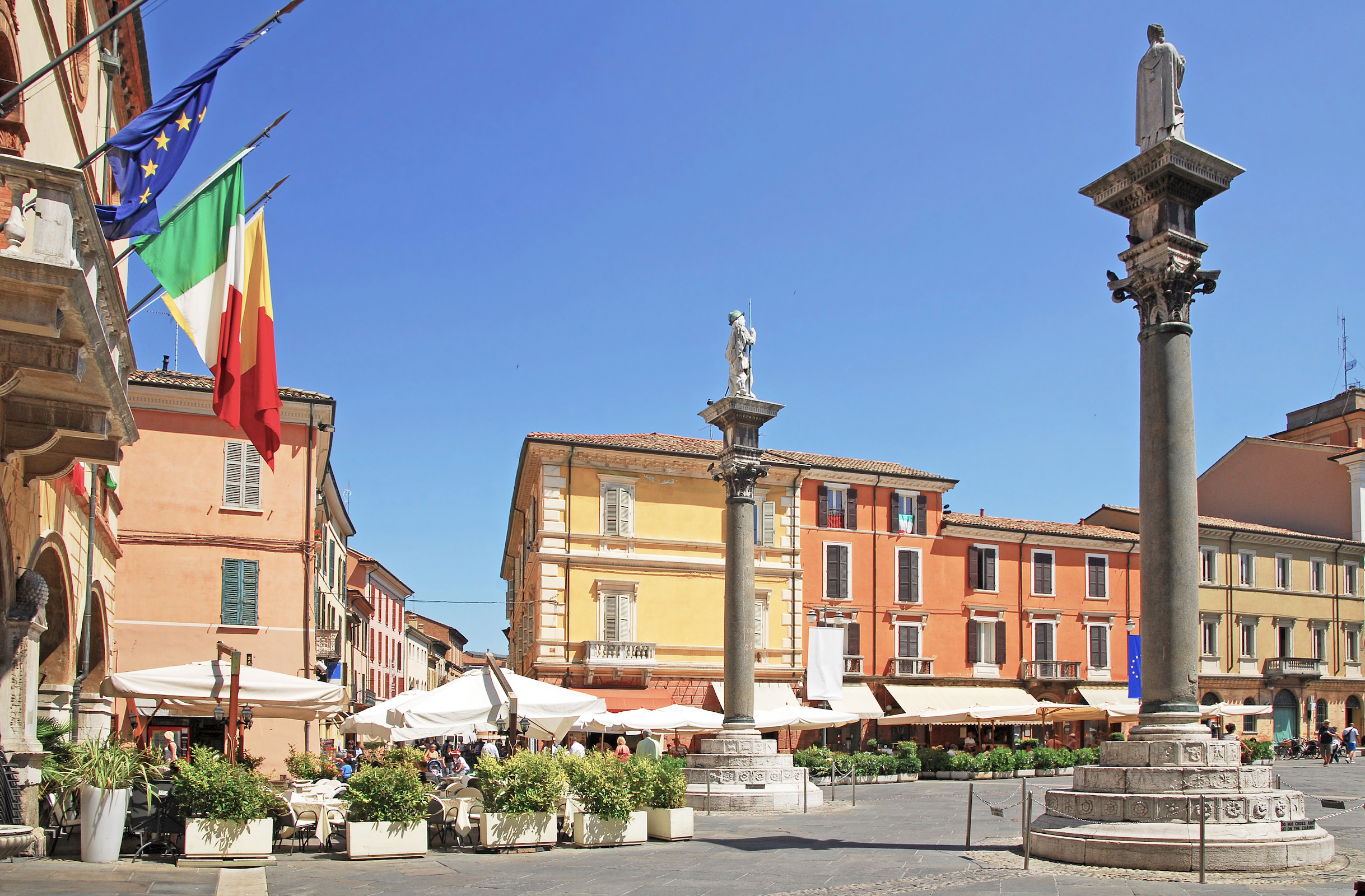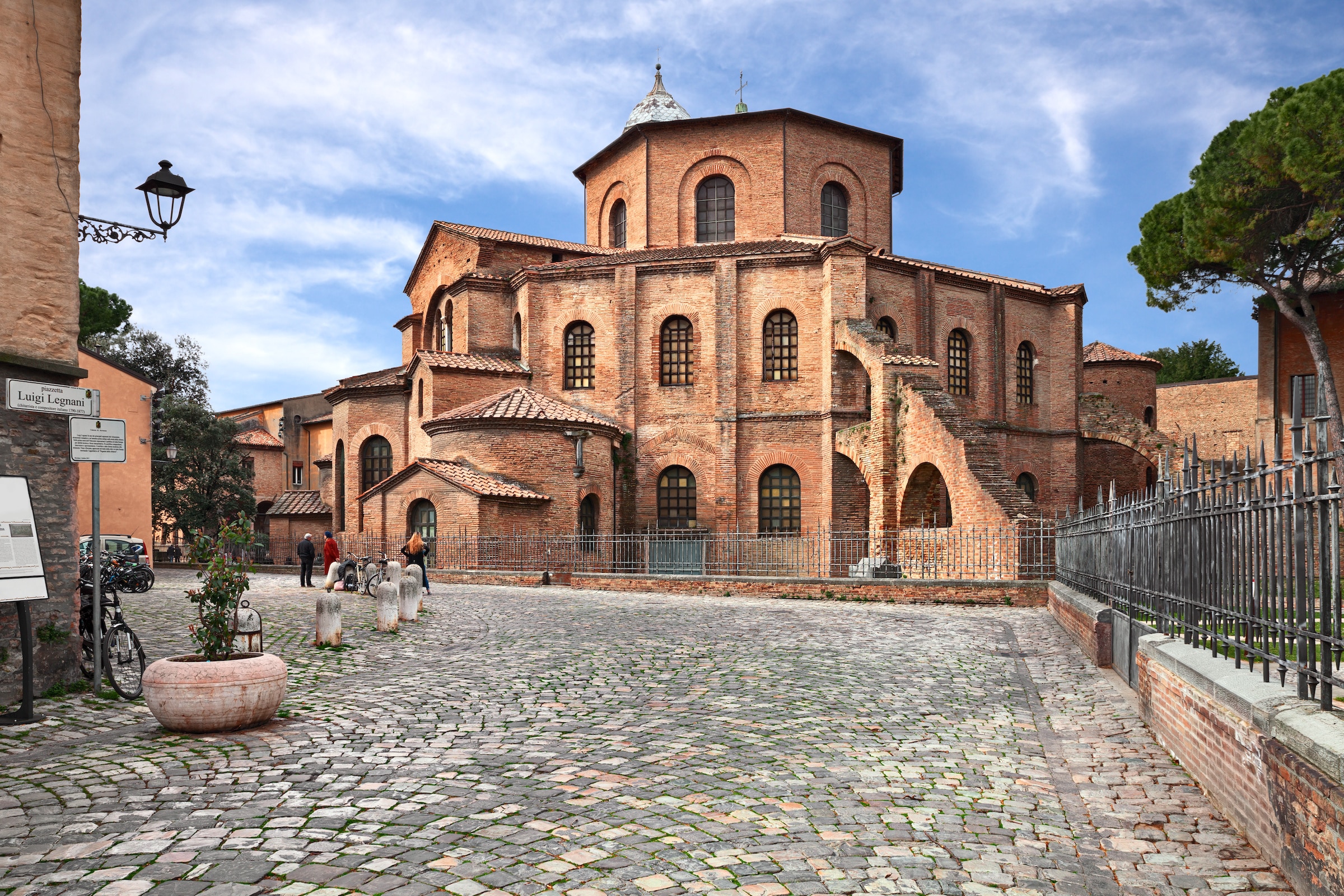Ravenna

Ravenna, city of living antiquity
Ravenna is strategically located on the Adriatic coast and was historically an important seaport, giving the city a significant role in the history of Italy and the Mediterranean region. Today, the city attracts visitors from all over the world who want to walk in the footsteps of the past and admire the outstanding works of art that have survived for more than a millennium.
Ravenna's architectural treasures include eight buildings that have been declared World Heritage Sites by UNESCO, including the Basilica of San Vitale, the Mausoleum of Galla Placidia, the Baptistery of the Arians and the Baptistery of the Orthodox. These monuments house some of the best-preserved examples of early Christian and Byzantine mosaic art in Europe. The bright colors and complex patterns of Ravenna's mosaics are not only of art-historical importance, but also provide insight into the theological and cultural ideas of their time.
The Basilica of San Vitale, one of the most outstanding examples of early Christian art and architecture, is famous for its detailed mosaics depicting biblical scenes and historical figures such as Emperor Justinian and his wife Theodora.
The mausoleum of Galla Placidia impresses with its intense blue and gold tones and is considered one of the most artistically perfect in the city. The cross vault of the small central building is completely covered with mosaics depicting starry skies and biblical scenes.
However, the city is not only an attraction for history and art lovers. Ravenna is also a center for music and literature, where cultural events and festivals take place regularly, including the Ravenna Festival with classical music, opera and ballet.
In addition to its historical significance, Ravenna also has a rich culinary tradition that focuses on local and seasonal produce. The market in the old town is a lively place where you can sample local specialties such as handmade pasta, fresh fish and the famous piadina bread.

Sights in Ravenna
What is there to see in Ravenna? The most important attractions at a glance:
- Basilica of San Vitale: This masterpiece of Byzantine art is famous for its impressive mosaics, which depict scenes from the Old Testament and decorate the walls and dome. The church was completed in the 6th century and is considered one of Ravenna's most important sights, especially because of the depiction of Emperor Justinian and his wife Theodora on the mosaics.
- Mausoleum of Galla Placidia: Although it is referred to as a mausoleum, it is not certain whether Galla Placidia was actually buried here. The interior is famous for its deep blue mosaics depicting starry skies and Christian symbols, creating a calm and meditative atmosphere.
- Baptistery of the Arians: Built by the Ostrogoths, this building is characterized by a central mosaic depicting the baptism of Christ. It is a fascinating example of the artistic tradition of the Arians, a Christian movement that deviated from the Trinity doctrine of the main church.
- The Baptistery of Ravenna Cathedral (also known as the Orthodox Baptistery or Neonian Baptistery ). The oldest building in Ravenna and a UNESCO World Heritage Site, famous for its breathtaking ceiling mosaic depicting the baptism of Christ by John the Baptist. It reflects the transition from Roman to Byzantine art and bears witness to the city's religious and cultural history.
- The Archbishop's Museum (Museo Arcivescovile): It houses a collection of artworks and artifacts related to the city's history, including the famous ivory throne of Archbishop Maximian. The museum also houses fragments of early Christian mosaics and fabrics as well as the Chapel of Sant'Andrea with its impressive mosaics.
- Basilica of Sant'Apollinare Nuovo: Originally built as a palace chapel for Theodoric the Great, it is famous for its long rows of mosaics depicting processions of saints and martyrs. The church offers a unique insight into early Christian iconography and Ostrogothic history.
- Dante Alighieri Mausoleum: The resting place of the great Italian poet attracts literature lovers from all over the world. Dante was banished to Ravenna and died there in 1321; the mausoleum is an important place of pilgrimage for his admirers.
- Sant'Apollinare in Classe: Located a few kilometers outside the city center, this basilica is famous for its extraordinary mosaics, including an apocalyptic depiction of the transfigured Christ. The church is also notable for its impressive architecture and is an example of Byzantine art and architecture outside the city center of Ravenna.
Where is Ravenna?
Ravenna is a city in Italy. It is located about 283 km north of the capital Rome. There are about 158.000 inhabitants living in Ravenna.